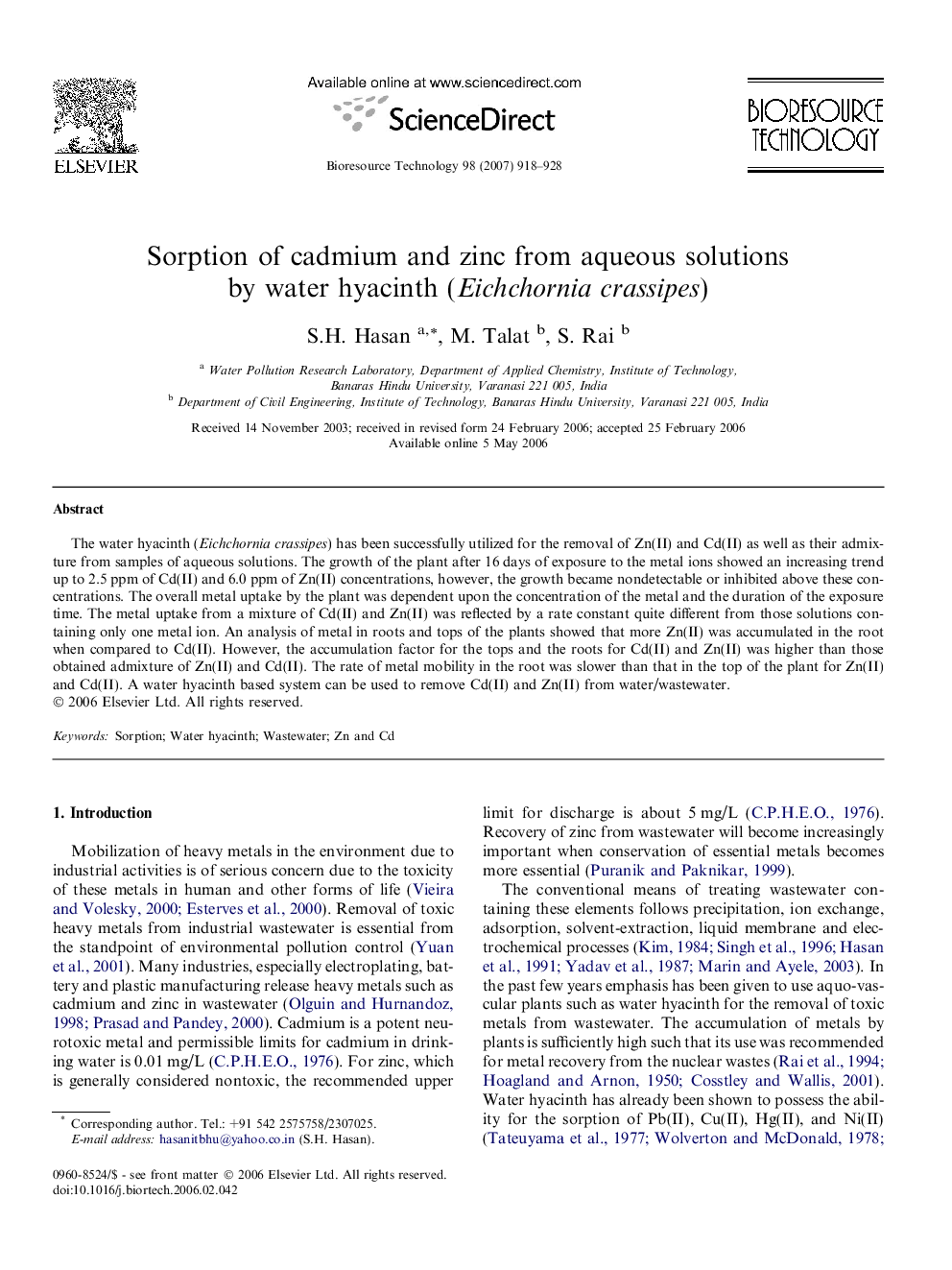| Article ID | Journal | Published Year | Pages | File Type |
|---|---|---|---|---|
| 686634 | Bioresource Technology | 2007 | 11 Pages |
Abstract
The water hyacinth (Eichchornia crassipes) has been successfully utilized for the removal of Zn(II) and Cd(II) as well as their admixture from samples of aqueous solutions. The growth of the plant after 16 days of exposure to the metal ions showed an increasing trend up to 2.5Â ppm of Cd(II) and 6.0Â ppm of Zn(II) concentrations, however, the growth became nondetectable or inhibited above these concentrations. The overall metal uptake by the plant was dependent upon the concentration of the metal and the duration of the exposure time. The metal uptake from a mixture of Cd(II) and Zn(II) was reflected by a rate constant quite different from those solutions containing only one metal ion. An analysis of metal in roots and tops of the plants showed that more Zn(II) was accumulated in the root when compared to Cd(II). However, the accumulation factor for the tops and the roots for Cd(II) and Zn(II) was higher than those obtained admixture of Zn(II) and Cd(II). The rate of metal mobility in the root was slower than that in the top of the plant for Zn(II) and Cd(II). A water hyacinth based system can be used to remove Cd(II) and Zn(II) from water/wastewater.
Keywords
Related Topics
Physical Sciences and Engineering
Chemical Engineering
Process Chemistry and Technology
Authors
S.H. Hasan, M. Talat, S. Rai,
